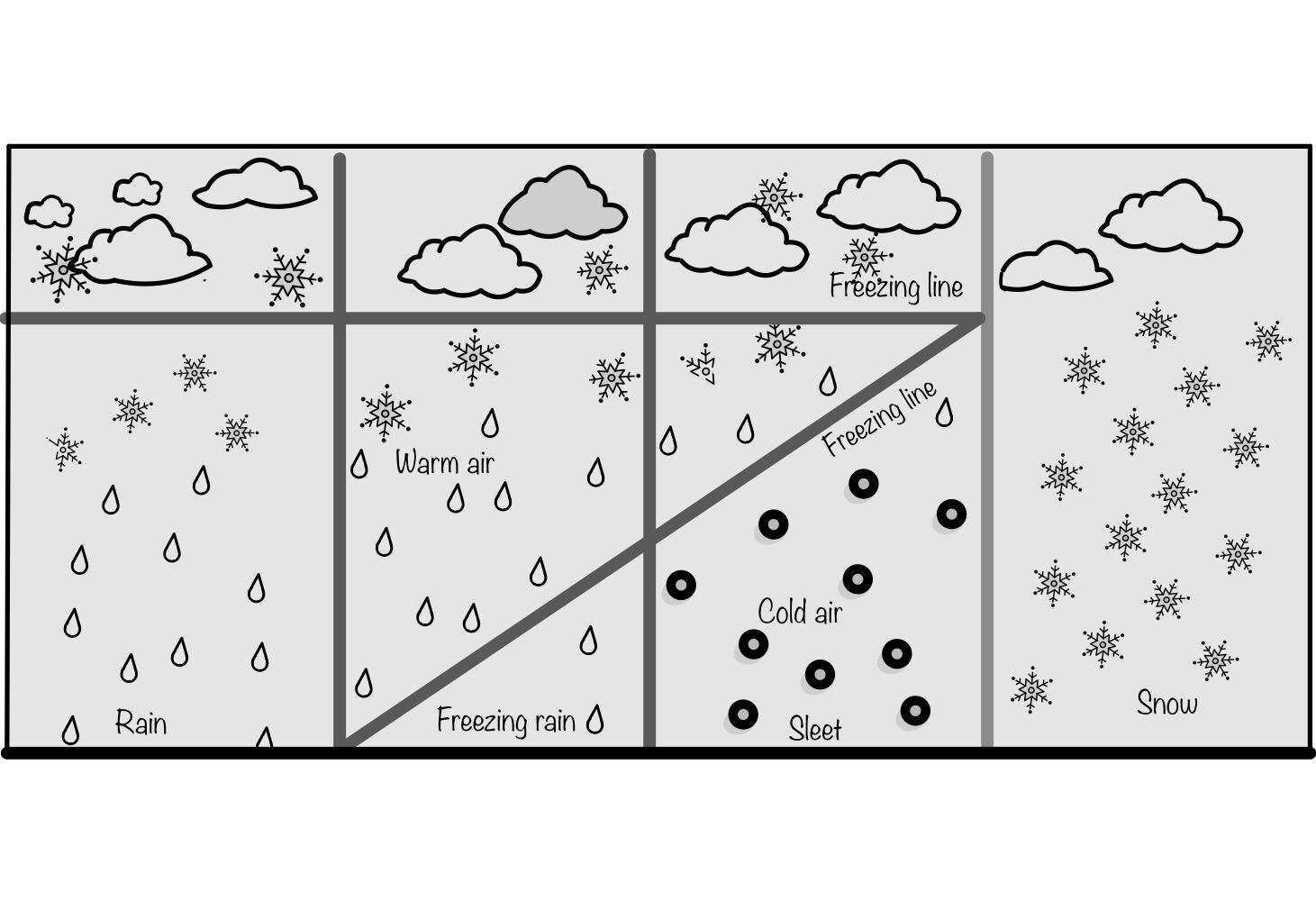Rain is the first thing that comes to our mind when we think of precipitation. But there are several others forms of precipitation along with rain.
Among factors like temperature, humidity, and wind, precipitation is an important factor used by meteorologists to forecast and measure weather. Precipitation is any type of water formed in the earth’s atmosphere falling on the earth’s surface by gravity.

Key Information about Precipitation
All precipitation develops in clouds, and clouds are formed when water vapour in the atmosphere cools and condenses. As the water vapour condenses it forms water droplets. Once the water droplets grow and get heavy to stay suspended in the air, it starts falling due to the force of gravity.
Some types of precipitation can be associated with summer and others with winter, but it is not necessary that it has to be weather relative.
Forms of Precipitation
It can take any form including rain, hail snow and others. Following are the major types and how they are formed.
- Rain: No doubt it’s the most common type of precipitation. Meteorologists describe rain droplets in various forms. Tiny water droplets that fall from the clouds themselves merged together until the droplet size is large enough to fall under its own weight. The drop size of rain is between 0.5 to 6 mm in dia.
- Drizzle: It is composed of very small water droplets 0.5 mm or less in diameter (< 0.5 mm in dia). Even though drizzle is made of small droplets it can still produce poor weather and can heavily reduce visibility because the droplets are small and close to each other.
- Glaze: This forms when drizzle droplets or raindrops become supercooled as they fall through a layer of air at a sub-frost point temperature
- Snow: It is precipitation in the form of ice crystals. As mentioned earlier precipitation develops in clouds, when the water vapour freezes into crystals in the clouds it falls to the earth’s surface as ice flakes. Snow if formed when the temperature in the cloud is below freezing (less than 0° C). Unlike rain, snow is precipitation falling in the form of ice crystals.
- Sleet: It is rain, which is partially frozen. It is formed when melted snow or rain hits a cool pocket of air above ground level. It is generally light and does not damage crops like other forms of precipitation like hail, and heavy snow.
- Hail: Hailstones are formed when raindrops are carried upward by thunderstorm updrafts into extremely cold areas of the atmosphere and freeze. Hailstones can measure between 5 mm (0.2 in) and 15 cm (6 in) in diameter.
Conclusions
Precipitation can take several forms, such as rain, drizzle, snow, sleet and hail, depending on the atmospheric conditions at which the clouds are formed, temperature around, and ground level conditions.
Precipitation can be of the following forms:
- Rain: The most common form of precipitation, formed by the condensation of water vapour into water droplets merged together until the droplet size is large enough to fall under its own weight (0.5-6 mm dia).
- Drizzle: Composed of very small water droplets 0.5 mm or less in diameter
- Glaze: A very thin coating of ice that forms when supercooled rain or drizzle drops strike surface below freezing temperature.
- Sleet: Raindrops pass through the air at subfreezing temperatures.
- Snow: Precipitation in the form of ice crystals forms when the water vapour
- Hail: It is precipitation in the form of balls or lumps of ice over 5 mm diameter.
This article was crafted by a group of experts at eigenplus to ensure it adheres to our strict quality standards. The individuals who contributed to this article are:
Author

Vishal
PhD
He is a research scholar with a doctorate in environmental hydraulics.

